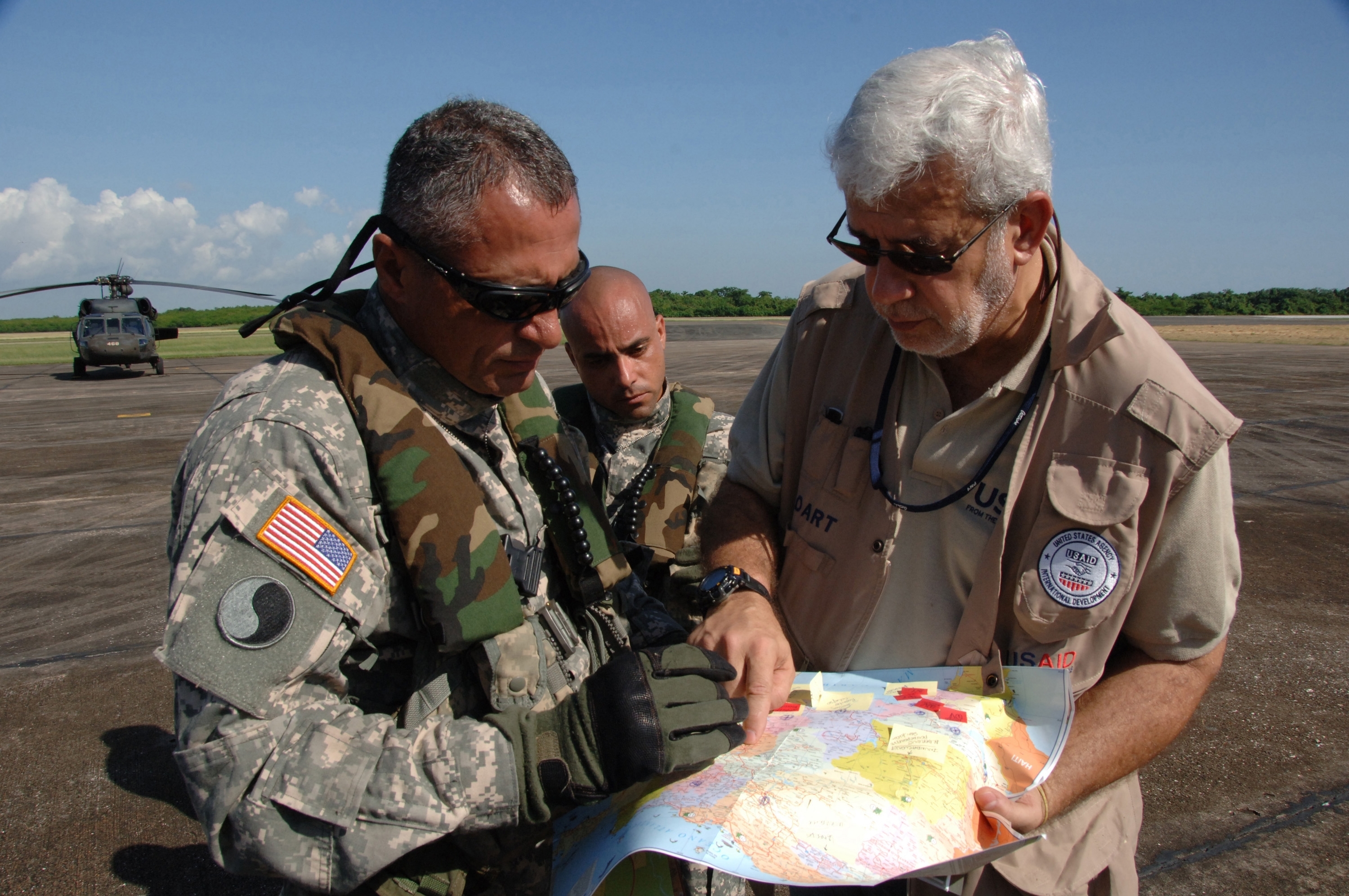President Trump has declared September 2017, as National Preparedness Month, and this is a good time with the devastation of Tropical Storm Harvey that we all develop personal plans on what to do in our family if a disaster strikes. Some of our SOFREP brethren in the LoadOut Room will be writing about how we can exactly go about that. But what happens when a disaster strikes one of friends and allies in the world. When we think of Special Operations Forces, we normally see videos of door kickers and direct action type of missions. But in times of emergencies, some of the first people you may find are Special Operations Forces who are ideal first responders to natural disasters.
Through some of the most recent natural disasters, Hurricane Sandy, which ravaged the Northeast 5 years ago; Hurricane Andrew, the most destructive hurricane in Florida’s history, and, just this week the Texas area around Houston which has been devastated by Hurricane Harvey, we’ve been blessed with our own first responders. With other natural disasters outside our shores, as in Haiti, and Nepal, as well as others Special Operations troops were our first to answer the call.
US Army Special Forces units and their organic assets are ideal first-response units to natural disasters due to their varied skill sets, speed of response, and ability to work independently in remote areas. Green Berets are particularly suited to work under the most extreme hardships, with little or no supervision, and can demonstrate tremendous amounts of initiative and creativity in unique and changing situations. The training that readies them for Unconventional Warfare makes them versatile, and able to think on their feet in the most trying of circumstances. The compact, versatile, and adaptable A-detachments of which Special Forces Groups are composed can serve as vital resources in humanitarian and disaster relief operations.
SOF overall function as a force multiplier and provides speed, organic command and control, and unique mission sets that may significantly improve the U.S. government’s rapid response to foreign disaster relief. Since SOF is designed to support short-notice special operations missions, as a dynamic organization, it can easily adapt to specific needs. SOF units build and maintains close relationships around the world with many foreign military and government agencies and have the built-in knowledge of a country’s, people, and customs which makes them ideal for hitting the ground first in an emergency. When a natural disaster strikes SOF units are the perfect first responders in Disaster Relief (DR) operations.
One of the Special Operations “Truths” that SOF units live by is “Competent SOF cannot be created after emergencies occur” and that is a lesson learned the hard way. There will not have to be putting together an ad-hoc emergency deployment team. Special Operations teams can be deployed on a moment’s notice are designed to act quickly and are designed to hit the ground running. And in some cases, such as Nepal, there were Special Forces A-Teams already on the ground and immediately went from a training mode into a disaster relief scenario. That is where the flexibility and versatility of the Special Forces A-Teams are on display.
However, there are some limitations to what Special Operations can accomplish after a natural disaster occurs. Special Operations Forces lack the ability to sustain long-term relief efforts and are best suited as a first responder unit until other DOD and U.S. government and civilian humanitarian organizations can be put into action. The rapid response and versatility provide the US with critical capabilities in the all-important first hours and days after a natural disaster and put boots on the ground in an emergency situation.
The normal U.S. agency involved in long-term disaster relief would be USAID. The SOF units would work with and then support a turnover of effort to USAID in a long-term relief effort overseas. One problem with this is that USAID has a very limited understanding of SOF and its capabilities. The USAID “Field Operations Guide for Disaster Assessment and Response,” lists just two careers under their SOF section: civil affairs and psychological operations.They don’t list the various Special Operations Forces as potential partners and wouldn’t know the extent of the capabilities available.
Having closely with USAID in the past, it is an issue that hopefully has been resolved in the past few years. But in my experience, USAID looked upon Special Operations Forces more as a hindrance than a partner. Despite the fact that SF teams were conducting civic action projects under the auspices of USAID, under budget and under the time allotted, we were looked upon as “knuckle draggers” who weren’t “on the same page” as the country team’s goals.
But when a natural disaster happens overseas, one of the first calls will be to the Special Operations Forces of the military services. They have the capability, versatility, and skills needed to land in a disaster zone and provide relief and support to the stricken people and area. During National Preparedness Month, we know that they’re ready to answer the call, just like they did in Houston. Despite the operational tempo of doing the heavy lifting in three major conflicts. And chances are, they will already know the area, the people and many of the major players involved.
So while “death, taxes and natural disasters” are the only sure things in life, seeing a Special Operations unit at the site of a natural disaster is a sure bet as well.
Photos Courtesy: DOD
